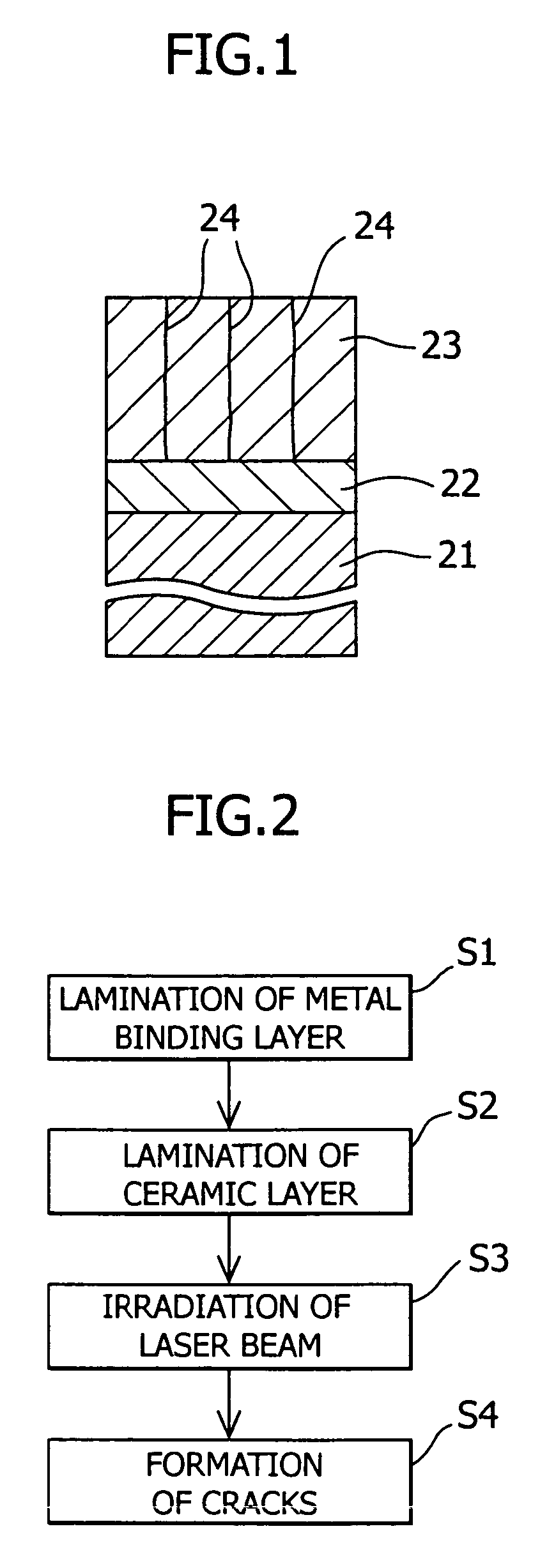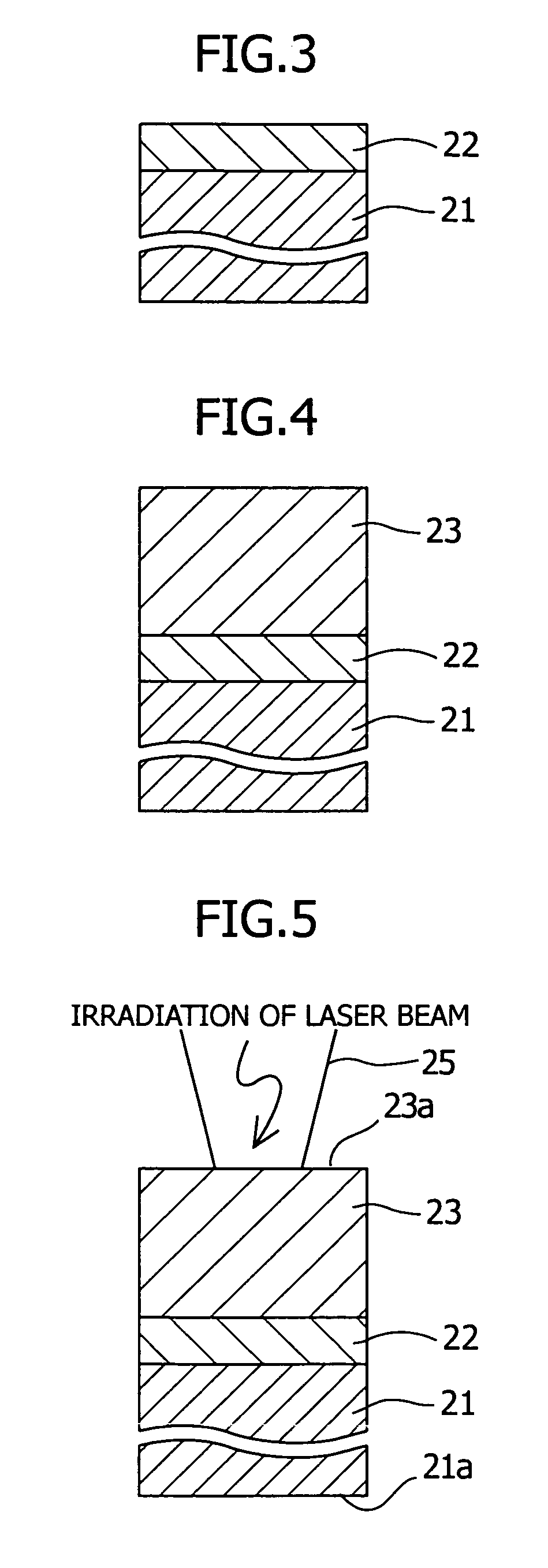Thermal barrier coating material and method for production thereof, gas turbine member using the thermal barrier coating material, and gas turbine
a technology of thermal barrier coating and thermal barrier coating, which is applied in the direction of machines/engines, waterborne vessels, natural mineral layered products, etc., can solve the problems of increased thermal conductivity of topcoat, reduced peeling resistance, and difficulty in application to large-scale gas turbines or the like. , to achieve the effect of reducing peeling resistance, reducing cost, and adequate durability
- Summary
- Abstract
- Description
- Claims
- Application Information
AI Technical Summary
Benefits of technology
Problems solved by technology
Method used
Image
Examples
examples 1 to 15
[0115]The sample Nos. 1 to 15 described below were prepared.
(Sample No. 1)
[0116]The surface of the base material was grid-blasted with Al2O3 particles and put in a state suitable for low pressure plasma spraying. A CoNiCrAlY alloy layer was then formed to a thickness of 0.1 mm by the low pressure plasma spraying. A ceramic layer comprising porous and partially stabilized ZrO2, which had been partially stabilized by 8 wt % of Y2O3 as an additive, was then formed to a thickness of 0.5 mm by atmospheric pressure plasma spraying. Then, while cooling the rear surface of the base material, the top surface of the ceramic layer was subject to 30 seconds×100 times of irradiations of a laser beam from a carbon dioxide laser. Thus, the heat cycle was repeated. In this process, the top surface of the ceramic layer was heated to a maximum temperature of 1400° C. The irradiation area per spot of the laser beam was 177 mm2 (beam diameter: 15 mm). The entire sample was then cooled to room temperatu...
examples 1 to 136
[0141]Sample Nos. 101 to 136, described below, were prepared.
(Sample No. 101)
[0142]The top surface of the base material was grid-blasted with Al2O3 grains and put in a state suitable for low pressure plasma spraying. A CoNiCrAlY alloy layer was then formed to a thickness of 0.1 mm by the low pressure plasma spraying. A ZrO2-10 wt % Dy2O3-0.1 wt % Yb2O3 layer was then formed to a thickness of 0.5 mm by atmospheric pressure plasma spraying.
(Sample No. 102)
[0143]The top surface of the base material was grid-blasted with Al2O3 grains and put in a state suitable for low pressure plasma spraying. A CoNiCrAlY alloy layer was then formed to a thickness of 0.1 mm by the low pressure plasma spraying. A ZrO2-10 wt % Dy2O3-6 wt % Yb2O3 layer was then formed to a thickness of 0.5 mm by atmospheric pressure plasma spraying.
(Sample No. 103)
[0144]The top surface of the base material was grid-blasted with Al2O3 grains and put in a state suitable for low pressure plasma spraying. A CoNiCrAlY alloy la...
PUM
| Property | Measurement | Unit |
|---|---|---|
| specific surface area | aaaaa | aaaaa |
| porosity | aaaaa | aaaaa |
| thickness | aaaaa | aaaaa |
Abstract
Description
Claims
Application Information
 Login to View More
Login to View More - R&D
- Intellectual Property
- Life Sciences
- Materials
- Tech Scout
- Unparalleled Data Quality
- Higher Quality Content
- 60% Fewer Hallucinations
Browse by: Latest US Patents, China's latest patents, Technical Efficacy Thesaurus, Application Domain, Technology Topic, Popular Technical Reports.
© 2025 PatSnap. All rights reserved.Legal|Privacy policy|Modern Slavery Act Transparency Statement|Sitemap|About US| Contact US: help@patsnap.com



